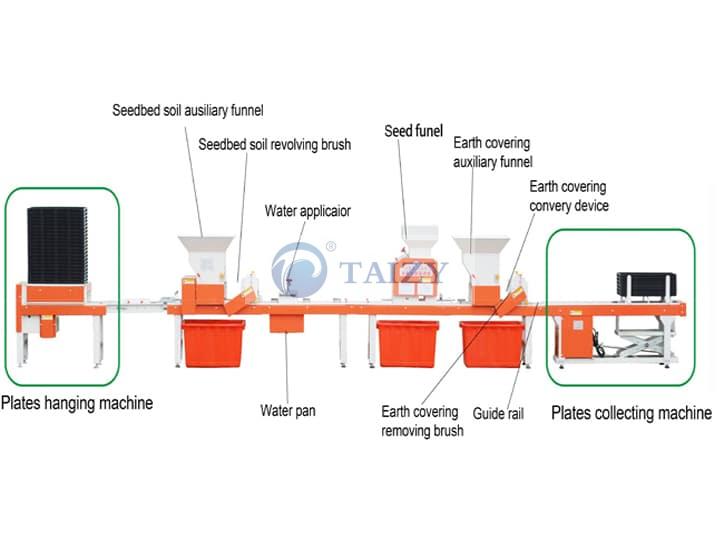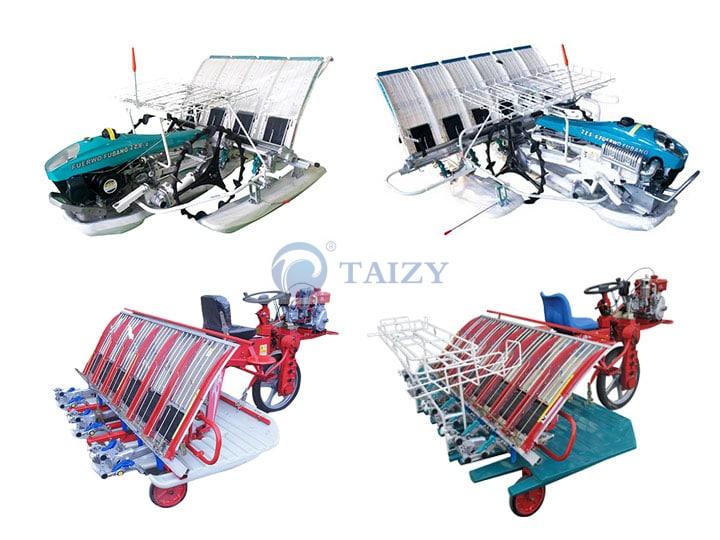As far as rice field cultivation is concerned, it can be divided into two types, one is direct seeding, and the other is rice seedling transplanting. The classification and advantages of rice nursery seedling and transplanting are analyzed as follows, for reference only.
Overview of Rice Nursery Seeding and Transplanting
Rice seedling transplanting refers to a form of rice cultivation that changes the past practice of direct sowing in the field. Transplanting means to sow the rice seedlings directly: cultivates suitable-period and strong seedlings, and then transplants them to the field. The rice raising adopts a fully automatic rice nursery seedling planting machine, which has a high degree of automation and a high survival rate of rice seedling raising.

The Advantages of Rice Nursery Seedling
- The quality of the rice nursery seedling is good, and the disease is not easy to develop during the seedling stage. The floppy disk as an isolation layer not only keeps heat, warms, but also keeps cool and moisturizes. It is filled with nutrient soil prepared according to scientific methods. It combines the advantages of various seedling methods. The seedlings hardly cause bacterial wilt and wilt. Growth is fast, and the seedlings are neat and strong. The quality of the seedlings is good, and they will turn green quickly after transplanting.
- It can increase the ratio of seedling Honda, which is 3 to 5 times higher than that of conventional methods.
- The rice nursery seedling is convenient to manage. As the area for growing seedlings is reduced, seedlings can be grown in the courtyard and in front of and behind the house, and auxiliary labor can participate in the operation and management. Replenishing water, ventilating the seedlings, and applying fertilizer and spraying drugs can be timely and in place. The bred seedlings are brought into slices with soil, transported to save labor, transplanted with soil, whole roots are planted in the ground, turn green quickly, and have a high survival rate.
- Reduce the cost of raising rice seedlings. It can save 2/3 of the seedling field, save labor and plant, save seedling materials, and save a lot of water for the seedling. Although it is necessary to purchase a floppy disk, the service life of the floppy disk is 3 to 4 years, and the annual cost is not high. Therefore, the comprehensive cost of rice seedling raising is greatly reduced accordingly.
rice seedling machine video
Classification of Rice Seedling Transplanting
Rice seedling transplanting can be divided into mechanical transplanting and manual transplanting according to the transplanting subject.
Advantages of Rice Nursery Seedling Transplanter
Mechanical transplanting refers to a kind of rice that uses mechanical equipment such as a 2-row rice transplanter, 4-row rice transplanter, 6-row rice transplanter, seedling sprayer to transplant rice seedlings of the appropriate period to the field according to requirements and standards. At present, mechanical transplanting mainly refers to transplant rice seedlings by the rice transplanter. Rice transplanting machine is suitable for large area transplanting, and its efficiency is high.

Manual Transplantation of Rice Seedling
Manual transplanter refers to a form of rice cultivation. The seedlings of the appropriate period are transplanted to the field. It is a purely artificial manner in accordance with agronomic requirements and specifications without the use of mechanical equipment. Manual transplanting efficiency is slow and suitable for transplanting in a small area. The development of plug tray seedlings has led to the artificial throwing of seedlings in seedling transplanting. The seedlings in the pot are artificially oriented or mechanically thrown to make the roots of the seedlings fall freely into the field for planting. Artificial throwing seedlings used to be a major form of cultivation of seedlings in the tray and has been promoted worldwide, but with the upgrading of rice seedling transplanting technology, few people have adopted this technology anymore.
